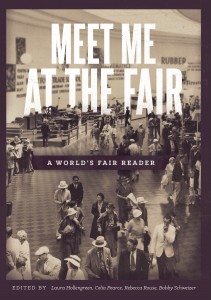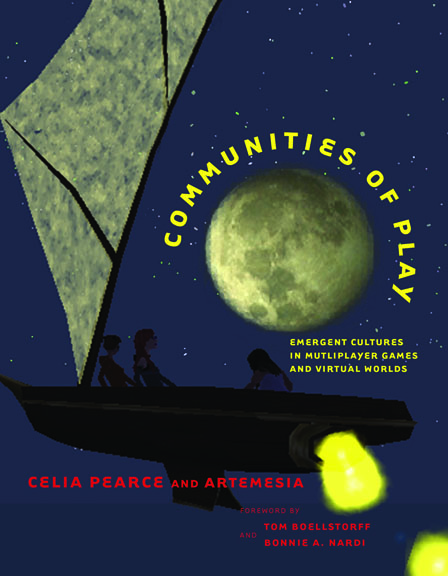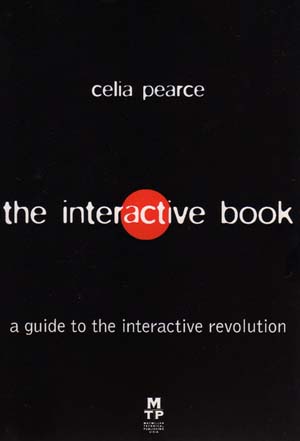Virtual Worlds Survey Report: A Trans-World Study of Non-Game Virtual Worlds
Infographic
Abstract
This Report presents results of a virtual world (VW) survey conducted in the summer of 2012, and subsequent analysis through summer of 2014. The aim of this study was to enhance our understanding of demographics, attitudes, activities and play preferences across a variety of non-game, social virtual worlds, also referred to as metaverses. The need for this study arose out of our observation that, while multiple surveys have been conducted on these aspects of a variety of different massively multiplayer games (MMOGs), only a few single-world, topical surveys have been conducted of equivalent non-game worlds, such as Second Life and There.com. Our past qualitative and mixed-methods research in multiple virtual worlds indicated that there were significant differences in both demographics and play patterns between open-ended worlds and the more studied game-style worlds. The survey included over 800 denizens of 36 different virtual worlds – recruited via Facebook, virtual world forums and blogs, as well as inworld networks – and focused on four key areas:
- Demographics: including age, gender, race/ethnicity, sexual orientation, marital and family status, income and employment status, religion, region of residence, and disability
- Avatar Presentation: including form, dress, role, use of alts, and cross-gender play
- Activities and Play Patterns: including amount and times of day spent, favorite activities, and social interactions including dating, sex, and the fluidity of relationships between virtual worlds and real life
- Creativity and Commerce: including creative activity, real estate ownership, virtual item transactions, virtual currency transactions, and income from virtual world activities
The report also includes a comparative analysis of similar results from game-based surveys to better understand the similarities and differences between these forms of virtual worlds. We conclude with a summary of the findings, a description of a planned supplement dealing with responses to open-ended questions, and suggested topics for further research. This report covers primarily multiple-choice questions across these subject areas, and a summary of responses to open-ended questions. A subsequent supplement will be released with more detailed analysis of open responses.
Authors
- Celia Pearce is a game designer, author, teacher and researcher with expertise in multiplayer games and virtual worlds, as well as independent and art games, and games and gender. This study was conducted while she was an Associate Professor of Digital Media at Georgia Tech; she has recently joined the faculty of Northeastern University as an Associate Professor of Game Design.
- Bobby R. Blackburn is an independent game designer and research consultant. He began working on the VW Demographic survey while earning a BS in Computational Media from the Georgia Institute of Technology with a focus toward game design and development. He helped research, author, and launch the survey instrument, managed advertising and recruitment, conducted data cataloging and analysis, authored tables and diagrams, and co-authored the final report.
- Carl Symborski is a Chief Engineer at Leidos, Inc., where he is a program manager and technologist leading science and technology programs, including training games-related research programs. His research interests include serious games, virtual communities, and computer networking.
Ethnography and Virtual Worlds: A Handbook of Method
by Tom Boellstorff, Bonnie Nardi, Celia Pearce and T.L. Taylor

Ethnography and Virtual Worlds is the only book of its kind–a concise, comprehensive, and practical guide for students, teachers, designers, and scholars interested in using ethnographic methods to study online virtual worlds, including both game and nongame environments. Written by leading ethnographers of virtual worlds, and focusing on the key method of participant observation, the book provides invaluable advice, tips, guidelines, and principles to aid researchers through every stage of a project, from choosing an online fieldsite to writing and publishing the results.
- Provides practical and detailed techniques for ethnographic research customized to reflect the specific issues of online virtual worlds, both game and nongame
- Draws on research in a range of virtual worlds, including Everquest, Second Life, There.com, and World of Warcraft
- Provides suggestions for dealing with institutional review boards, human subjects protocols, and ethical issues
- Guides the reader through the full trajectory of ethnographic research, from research design to data collection, data analysis, and writing up and publishing research results
- Addresses myths and misunderstandings about ethnographic research, and argues for the scientific value of ethnography
Papers & Book Chapters
Pearce, C. (2010). Chapter 4: “The Diasporic Game Community: Trans-Ludic Communities and Latitudinal Research Across Multiple Games and Virtual Worlds.” In Online Worlds, Convergence of the Real and the Virtual (Bainbridge, W.S., Ed.). London: Springer-Verlig: 43-56.
Pearce, C. (2009). “Collaboration, Creativity and Learning in a Play Community: A Study of The University of There.” In Proceedings, Digital Games Research Association (DiGRA), 2009, September 1-4, 2009, London.
Magerko, B., Manzoul, W., Riedl, M., Baumer, A., Fuller, D., Luther, K., and Pearce, C. (2009). An Empirical Study of Cognition and Theatrical Improvisation. In the Proceedings of ACM Conference on Creativity and Cognition, Berkely, CA.(pdf)
Pearce, C. (2008). “Spatial Literacy: Reading (and Writing) Game Space.” In ProceedingsFuture and Reality of Gaming (FROG), October 17-19, Vienna, Austria.
Morie, J.F. & Pearce, C. (2008). “Uses of Digital Enchantment: Computer Games as the New Fairy Tales.” In Proceedings Future and Reality of Gaming (FROG), October 17-19, Vienna, Austria.
Pearce, C. and Artemesia. (2008). “Identity-as-Place: Trans-Ludic Identities in Mediated Play Communities—The Case of the Uru Diaspora.” In Proceedings Internet 9.0: Association of Internet Researchers (AOIR),, October 15-18, 2008, IT University, Copenhagen, Denmark.
Pearce, C. (2008). “The Truth About Baby Boomer Gamers.” Games & Culture, Vol 3, Issue 2.
Fron, J., Fullerton, T., Morie, J. & Pearce, C. (aka Ludica) (2008). “Getting Girls Into the Game: Towards a Virtuous Cycle.” In Beyond Barbie and Mortal Combat. Yasmin Kafai, Carrie Heeter, Jill Denner and Jen Sun (eds). Cambridge, Mass.: The MIT Press.
Pearce, C. (2007). “Narrative Environments from Disneyland to World of Warcraft.” In Space, Time, Play: Computer Games, Architecture and Urbanism: The Next Level. Friedrich von Borries, Steffan P. Walz, and Matteas Bottger (eds). Basel: Birkhauser.
Fron, J., Fullerton, T., Morie, J. & Pearce, C. (aka Ludica) (2007). “The Hegemony of Play.” In Situated Play: Proceedings of Digital Games Research Association 2007 Conference,Tokyo, Japan.
Fullerton, T., Morie, J. & Pearce, C. (aka Ludica) (2007). “A Game of One’s Own: Towards a New Gendered Poetics of Digital Space.” Digital Arts and Culture 2007, Perth, Australia.
Pearce, C., Ashmore, C. (2007). “Principles of Emergent Design in Online Games: Mermaids Phase 1 Prototype.” SIGGRAPH Sandbox, July 2007.
Fron, J., Fullerton, T., Morie, J. & Pearce, C. (aka Ludica) (2007). “Sustainable Play: Towards A New Games Movement for the Digital Age.” (Reprint) Games & Culture, Volume 2, Number 3, July 2007.
Fron, J., Fullerton, T., Morie, J. & Pearce, C. (aka Ludica) (2007). “Playing Dress-Up: Costume, roleplay and imagination.” Philosophy of Computer Games Online Proceedings, January 2007.
Pearce, C. (2006).
Seeing and Being Seen: Presence & Play in Online Games and Virtual Worlds. Position Paper for Online, Offline & the Concept of Presence When Games and VR Collide. October 25-27, Institute for Creative Technologies, University of Southern California.
Pearce, C. (2006). “Communities of Play: The Social Construction of Identity in Persistent Online Game Worlds.” Second Person: Role-Playing and Story in Games and Playable Media. Noah Wardrip-Fruin and Pat Harrigan (eds) Cambridge, Mass.: The MIT Press.
Pearce, C. (2006). “Games as Art: The Aesthetics of Play.” in Fluxus and Legacy, special issue of Visible Language. Ken Friedman and Owen Smith, issue eds; Sharon Poggenpohl, series editor and publisher.
Pearce, C. (2006). “Productive Play: Game Culture from the Bottom Up.” Games & Culture. Volume 1 Issue 1, Winter 2006.
Fron, J., Fullerton, T., Morie, J. & Pearce, C. (aka Ludica) (2005). “Sustainable Play: Towards A New Games Movement for the Digital Age.” Digital Arts & Culture Conference Proceedings, Copenhagen, December 2005.
Pearce, C. (2005). “Theory Wars: An Argument Against Arguments in the so-called Ludology/Narratology Debate.” In Changing Views: Worlds in Play (Digital Games Research Association Conference 2005 Proceedings).
Pearce, C. (2005). “The Art of Worldbuilding: A Conversation with Raph Koster.” Game Studies Journal. Volume 5, Issue 1, May 2005.
Pearce, C. (2004). “Towards a Game Theory of Game.” In First Person: New Media as Story, Performance and Game. Wardrip-Fruin, N. & Harrigan, P. (eds). Cambridge, MIT Press.
Pearce, C. (2003). “Game Noir: A Conversation with Tim Shafer.” Game Studies Journal, Volume 3, Issue 3, May 2003.
Pearce, C. (2002). “Story as Play Space: Narrative in Games.” King, L. (ed.) Game On (Exhibition Catalog). London, Lawrence King Publishing Limited.
Pearce, C. (2002). “The Player with Many Faces: A Conversation with Louis Castle.” Game Studies Journal, Volume 2, Issue 2, December 2002.
Pearce, C. (2002). “Emergent Authorship: The Next Interactive Revolution.” Computers & Graphics, Winter 2002.
Pearce, C. (2002). “Sims, BattleBots, Cellular Automata, God and Go: A Conversation with Will Wright.” Game Studies Journal, Volume 2, Issue 1, July 2002.
Pearce, C. (1997). “Beyond Shoot Your Friends,” Digital Illusion, ed. Clark Dodsworth. New York, Addison-Wesley.
Pearce, C. (1994). “The Ins & Outs of Nonlinear Storytelling.” ACM Computer Graphics, Volume 28, Number 1, May 1994.



